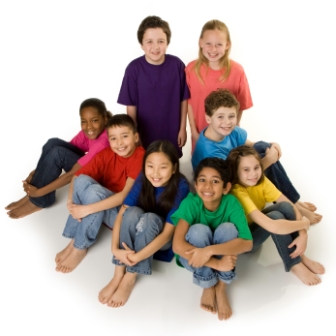By Jennifer Goykhman
There are many important factors to take in consideration when being intercultural. Not only does the home culture affect the person but also the culture of the neighborhood, school and last but not least the dominant culture. Being an Esol teacher, I have to understand the struggle my students face everyday and how they learn to form a bond between all of these forms of cultures and what they represent to them as a whole.
First of all, we need to understand, as a teacher, what exactly we are trying to teach these intercultural children, and what the right path is. I believe in guiding them in the right direction by allowing them to be comfortable with any culture. As Young Yun Kim discussed in his essay, “In this self-liberating process, our identity is transformed into something that will always contain the old and new, side by side, forming ‘a third kind.’” As a teacher, again, we need to understand what the third kind is. Allowing these children to feel safe in any culture and not have the ignorance of one race rising above. There are many challenges in doing so, and this is where we need to understand what effects these intercultural children everyday.
The home culture is the culture in which the child is being raised, no matter where in the world he is located. Home culture is one of the strongest cultures. It is what a person remembers first and it is a way of being while growing up. This becomes the base of a persons self, and for children, this is something they wholeheartedly associate with. Keturah A. Dunne suffered through her childhood up until her adolescence with this sense of home culture and what that made her. She was often confused when associated with Americans since her home culture was Latina. “Is the color of my skin what is most important?” She struggled with this question because children do not often realize what they appear to be but just focus on what is taught to them at home. After a few years, she got the point and understood that she was of many different backgrounds and that she could use her cultural heritage to her advantage.
The culture of the neighborhood and school: equally important
The culture in a neighborhood and school is very important because this is where a child realizes what he or she is, and where he belongs. Usually for many intercultural kids, the lesson is learned the hard way. They often hide their culture identity in a desperate quest to blend, until they understand that own culture heritage is just as good as any other. This is where an Esol teacher comes in. They should teach the students how every culture is special and how they can all learn from each other and grow.
Although the home culture is thought to be the strongest, the dominant culture always transcends and becomes clear to the person or child after years of learning the home culture, neighborhood and school culture. Mohammed H. Qayoumi learned this after so many years of going from culture to culture in his life. “I also realized that I could learn more about my own culture by learning about others,” he said when he was a child as he heard glorious stories about his culture and religion, Islam. He did not understand why everyone in the world did not convert to Islam and was honored to be part of the culture. He even states that at one point he felt sorry for other cultures and religions for not living up to their standards and loosing battles and so forth. He soon learned, as he grew older and traveled for school, that Islam was not the only culture and/or religion out there, and that every other culture must be glorified and cherished. He soon came to realize how similar they all are and how he could learn about his own culture through other cultures. This brings us back to the dominant culture, and how this affected him in the end.
I believe that all home, neighborhood, school and dominant cultures play a huge part of a child life. Not only they are important to the child, these culture traits will forever mark him as an individual when he reaches adulthood. I agree with Kim when he states that being intercultural enriches our lives and makes us better people in the end. It really opens our eyes and makes us more receptive to others’ differences. This is something that Esol children must learn at a very young age so this may remain an integral part of who they are as a person and what they will become tomorrow. There is so much diversity nowadays that it has become almost impossible to be an effective teacher without cultivating a sense of humility or tolerance or cross-cultural awareness when it comes to teaching a multicultural/multiethnic classroom.
Note: Jennifer Goykhman studies cross-cultural education at Nova southeastern University, near Fort Lauderdale, Florida.
Also see Intercultural principles: A closer look
Make our society a better place
What we need to teach our ESOL students about Nonverbal communication



Well done friend well done! Thank you very much you are a genius for your insight!
Thanks have a great one!
Thanks have a great one!
Thanks have a great one!